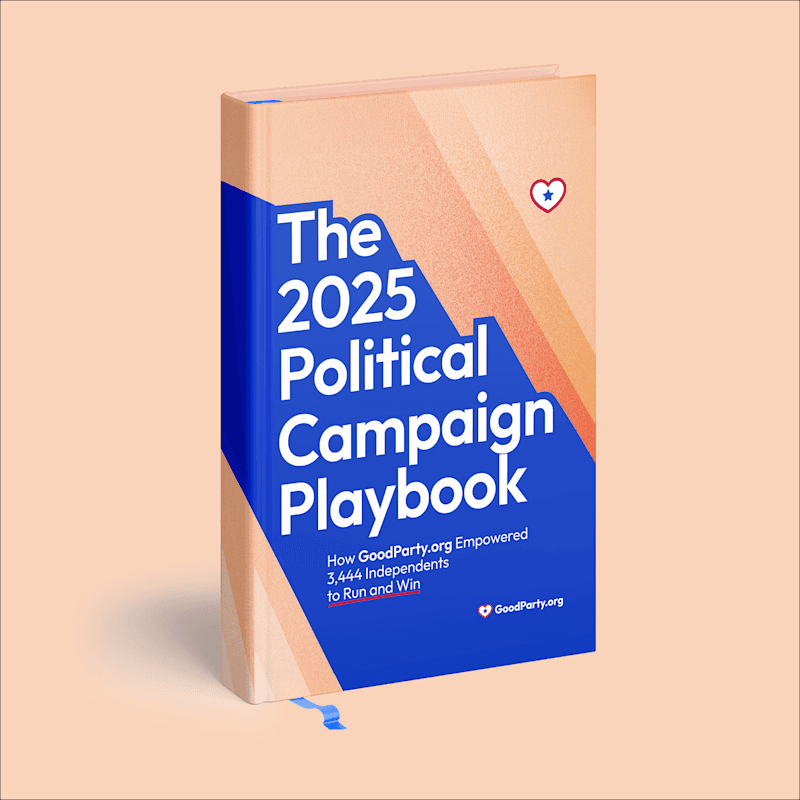
What Is a Blanket Primary Election?
Different states use different primary election systems in the United States, ranging from the general categories of open and closed primaries to more nuanced systems. The blanket primary election is one of these more nuanced forms of primary elections in the United States. In this guide, we’ll explore how blanket primaries work, how this electoral system came to be, and how this system differs from other types of primary elections.
Understanding the Blanket Primary
A blanket primary is a type of primary election where all candidates for the same elected office appear on a single ballot, regardless of party affiliation. This term is sometimes used interchangeably with the terms “jungle primary” and “nonpartisan blanket primary,” though the term “jungle primary” can also be used to indicate specific nuances.
In a blanket primary system, voters have the freedom to select one candidate per office without being restricted by the candidate's party affiliation. The top two candidates, regardless of their party affiliation, proceed to the general election. This is a significant departure from other primary systems where the leading candidates from each party advance.
While similar to an open primary, the blanket primary differs significantly as it allows the top two candidates to advance to the general election regardless of party affiliation. The essence of this system lies in its inclusivity, allowing voters to transcend traditional party boundaries.
Understanding Blanket Primary Elections
To fully understand blanket primaries, it’s first necessary to understand the logic behind primary elections in general.
The Background of Political Primaries
Traditionally, political parties send a representative or a set of representatives to the general election. The two major parties (Republican and Democrat) use direct primary elections. Voters engage in candidate selection for each respective party from a ballot that consists of registered members of that party. The top vote recipient or recipients (depending on the office) advances to the general election. Even for “closed primary” states, this represents some form of increasing voter engagement in the political process.
Prior to the initiation of this primary system, committees, conventions, or party bosses typically chose the nominees for general elections. Generally, smaller third parties retain this conventional method of candidate selection for general elections. This is because parties in most states must spend considerable money and resources to run a primary. Nominees of third parties and non-affiliated candidates appear on the general election ballot.
In the beginning of direct primaries, only party members could vote on the party's nominee. Below, we'll explain how these voting rights have broadened with different types of primary voting systems.
The Blanket Primary
In a blanket primary, voters can select candidates from any political party to run in a general election for a specific office. Currently, the top two vote-fetchers (regardless of affiliation) appear on the general election ballot. That is, no party is assured a representative or nominee on the general election slate.
Theoretically, the primary victors can come from the same party, none of the parties (if independents win), or from what we usually call “third parties,” that is neither Democrat nor Republican. In the form adopted by California, the blanket system still provided that the top vote-getter from each party represented the party on the general ballot.
The Significance of Blanket Primaries
With the blanket primary system comes the potential to stem the sharp divisions in today's American politics. According to the Bipartisan Policy Center, barely two out of every ten voters cast ballots in primaries. These participants tend to hold more extreme views, and primary candidates consequently gravitate towards those voters rather than more moderate voters. As such, the finalists from each of the parties appear less likely to represent the greater portion of their electorate who politically stand close to the middle. This discourages bipartisan voting by especially legislative office holders on bills.
A blanket primary election can give more moderate candidates a greater shot at advancing beyond the primary election. Other advantages over closed primaries include:
More candidates from which to choose
Opportunities for independents and candidates from a third party to get early exposure
Ability to vote for a preferred candidate earlier in the electoral process
More civic engagement
Promoting political neutrality in the U.S. election system by de-emphasizing the influence of political parties
Higher quality of candidates, who can tout their ability to solve problems, compromise when needed, and avoid being unnecessarily ideological
Along with attempting to reduce political party influence in general, top-two blanket systems eliminate the prospect of spoilers in general elections. These candidates, often from a third party or running as an independent, siphon general election votes from one of the two leading or major party candidates. For instance, a more progressive third-party hopeful or independent may attract those who otherwise would vote for a Democrat. More conservative voters might choose a Libertarian or conservative independent over a Republican.
The History of Blanket Primary Elections
Washington
Washington State established the first blanket primary in the United States in 1935. This came 32 years after Washington changed its primary election process from nominating conventions to direct primaries.
The U.S. Court of Appeals for the Ninth Circuit upheld in 2012 the “top-two” system implemented in Washington State after the United States Supreme Court reversed an earlier Ninth Circuit decision striking down this primary method.
Washington voters passed Initiative 872 in 2004. Under the initiative, primary voters choose from a slate of candidates without regard to the political affiliation of those running. The top two vote-getters, regardless of the party to which they belong, run in the general election.
In a 7-2 decision authored by Justice Clarence Thomas, the Supreme Court noted that Initiative 872 on its face did not interfere with the parties' freedom of association under the First Amendment. That is, voters would not (at least on the face of the initiative) choose a specific nominee from each party Thus, Washington State did not burden how political parties nominated candidates.
Alaska
Alaska's blanket primary process began in 1947 – some 12 years before Alaska became the 49th State in the Union. In its first year of statehood (1960), Alaska went to a “Single Ballot Open Primary,” which allowed voters to choose a party and then select preferences from a slate in that party. Alaska returned to blanket primaries in 1967. Currently, Alaska uses a “nonpartisan pick one primary” system, where the top four vote-getters advance to the general election regardless of party affiliation.
California
California adopted the blanket primary approach in 1996 with the passage of Proposition 198 by California voters. Under Proposition 198, voters could choose from all candidates of any political party. The candidate from each party who received the most votes would represent that party in the general election. The Golden State became the focal point for legal attacks on the system. Soon after Proposition 198's approval, the California Democratic Party, along with other state-level political party groups sued the California Attorney General over Proposition 198. In its 2000 opinion in California Democratic Party v. Jones, the United States Supreme Court struck down the blanket primary system created by Proposition 198.
According to the majority, Proposition 198 violated the political parties' freedom of association under the First Amendment of the United States Constitution. That is, California had infringed upon the parties' rights to decide how they would nominate candidates for general elections. Political party affiliation of candidates served the goals of the parties in advancing particular ideologies, policy goals, policies, and priorities.
With the electoral system created by Proposition 198, California allowed at the primary level nonpartisan voting which could deny parties their ability and right to have candidates aligned with and loyal to their causes.
In 2011, California modified its election laws to allow a “top-two” approach to primaries. Currently, all candidates in a primary election are listed on one ballot, and the top two vote-getters advance to the general election, regardless of party affiliation. Write-in candidates can only participate in the primary election.
Participating in a Blanket Primary: What You Need to Know
Generally, a blanket primary election relies upon the principle of nonpartisan voting. Neither the voters nor the candidates legally have to choose a party to participate. To become a candidate, you only need to meet the general requirements for the office. Depending on the office, this may include:
Being licensed as an attorney for prosecutor or judge positions
Residency in the county, municipality, or district
Not being a convicted felon
Blanket primary elections may encourage independent or third-party movements to rethink their election strategies. In states with partisan primaries, an independent candidate would usually face two or three candidates in the general election. With a more open and non-partisan primary race, you as an independent must differentiate yourself from many more candidates.
The top-two or top-four non-partisan systems described above put independents and third-party candidates on the ballot earlier in the electoral process.
For those looking for information on how to vote in a blanket primary election, note that there are key differences between different states. For the most complete information, it’s best to consult the website of your state’s secretary of state or division of elections.
Join the Movement for Electoral Reform
Blanket primary elections are one innovative method of electoral reform that has the potential to increase the number of meaningful choices available to voters. If you’re interested in learning more about electoral reform and how the independent movement is striving to create a more representative democracy, join GoodParty.org’s national community of changemakers today.
Photo by engin akyurt on Unsplash

